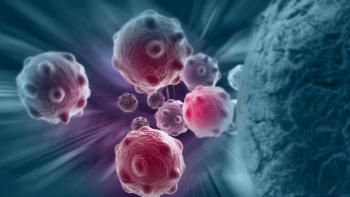
Guillermo Garcia-Manero, MD, on Eprenetapopt-Azacytidine Combo in TP53+ MDS
The MD Anderson expert discussed the phase 3 trial – designed to evaluate frontline eprenetapopt in combination with azacytidine (Vidaza) in patients with TP53-mutant positive myelodysplastic syndrome (MDS) – that recently completed full enrollment.
A phase 3 trial – designed to evaluate frontline eprenetapopt in combination with azacytidine (Vidaza) in patients with TP53-mutant positive myelodysplastic syndrome (MDS) – completed full enrollment, according to Aprea Therapeutics, Inc.
“First of all, if this study is positive, this will be a major improvement in our treatment armamentarium for this very difficult disease to treat,” Garcia-Manero, MD, from the Department of Leukemia in the Division of Cancer Medicine at The University of Texas MD Anderson Cancer Center, said in an interview with CancerNetwork.
With topline data expected to be seen by the end of 2020, promising efficacy outcomes could be very important for this patient population that is difficult to treat, he added. Garcia-Manero went on to discuss why TP53-mutant MDS are difficult to treat, why this study milestone is important, and what positive results from this study could mean.
Transcription:
Because a survival study requires you to follow the patient for their entire life expectation. Here, we need to compute those responses. So, what this means is that by having achieved accrual, we should have an answer to this study – whether it is positive or negative – in the next few months because the time to response with this kind of agent is a few months.
If the last patient was enrolled recently, then in less than 6 months, we should have information. It is expected that by the end of the year, we’ll know if the combination gave a higher response rate or not than chemotherapy. If it does, this will be a major breakthrough for us because it will allow the community to have access to this compound.
If this data is positive, then the drug will be approved and this will be the standard of care for patients with this particular mutation. The difference in response rate was very high, so what’s happening is we are able to transplant more patients. The preliminary data that we are seeing is a higher response rate and that allows a higher chance that we can transplant patients we couldn’t transplant before, and potentially a higher cure rate. We have to demonstrate that, but that will be the overall goal of this.
This could be very important for this particular group of patients with this mutation.
Newsletter
Stay up to date on recent advances in the multidisciplinary approach to cancer.
















































































